
India’s Three-Stage Nuclear Power Programme
Subscribe to Never Miss an Important Update! Assured Discounts on New Products!
Must Join PMF IAS Telegram Channel & PMF IAS History Telegram Channel
India’s Three-Stage Nuclear Power Programme. Fast Breeder Reactor at Kalpakkam. Deployment of Thorium Reactors In India? India’s Fissile Shortage Problem.
MUST READ:
India’s Three-Stage Nuclear Power Programme
- India’s three-stage nuclear power programme was formulated by Homi Bhabha in the 1950s to secure the country’s long term energy independence, through the use of uranium and thorium reserves found in the monazite sands of coastal regions of South India.
The ultimate focus of the programme is on enabling the thorium reserves of India to be utilized in meeting the country’s energy requirements.
- Thorium is particularly attractive for India, as it has only around 1–2% of the global uranium reserves, but one of the largest shares of global thorium reserves.
- However, at present thorium is not economically viable because global uranium prices are much lower.
- The recent Indo-US Nuclear Deal and the NSG waiver, which ended more than three decades of international isolation of the Indian civil nuclear programme, have created many hitherto unexplored alternatives for the success of the three-stage nuclear power programme.
- Thorium itself is not a fissile material, and thus cannot undergo fission to produce energy.
- Instead, it must be transmuted to uranium-233 in a reactor fueled by other fissile materials [plutonium-239 or uranium-235].
- The first two stages, natural uranium-fueled heavy water reactors and plutonium-fueled fast breeder reactors, are intended to generate sufficient fissile material from India’s limited uranium resources, so that all its vast thorium reserves can be fully utilized in the third stage of thermal breeder reactors.

Pic from The Hindu
Stage I – Pressurized Heavy Water Reactor [PHWR]
- In the first stage of the programme, natural uranium fuelled pressurized heavy water reactors (PHWR) produce electricity while generating plutonium-239 as by-product.
[U-238 → Plutonium-239 + Heat]
[In PWHR, enrichment of Uranium to improve concentration of U-235 is not required. U-238 can be directly fed into the reactor core]
[Natural uranium contains only 0.7% of the fissile isotope uranium-235. Most of the remaining 99.3% is uranium-238 which is not fissile but can be converted in a reactor to the fissile isotope plutonium-239].
[Heavy water (deuterium oxide, D 2O) is used as moderator and coolant in PHWR].
- PHWRs was a natural choice for implementing the first stage because it had the most efficient reactor design [uranium enrichment not required] in terms of uranium utilisation.
- India correctly calculated that it would be easier to create heavy water production facilities (required for PHWRs) than uranium enrichment facilities (required for LWRs).
- Almost the entire existing base of Indian nuclear power (4780 MW) is composed of first stage PHWRs, with the exception of the two Boiling Water Reactor (BWR) units at
Stage II – Fast Breeder Reactor
- In the second stage, fast breeder reactors (FBRs)[moderators not required] would use plutonium-239, recovered by reprocessing spent fuel from the first stage, and natural uranium.
- In FBRs, plutonium-239 undergoes fission to produce energy, while the uranium-238 present in the fuel transmutes to additional plutonium-239.
Why should Uranium-238 be transmuted to Plutonium-239?
Uranium-235 and Plutonium-239 can sustain a chain reaction. But Uranium-238 cannot sustain a chain reaction. So it is transmuted to Plutonium-239.
But Why U-238 and not U-235?
Natural uranium contains only 0.7% of the fissile isotope uranium-235. Most of the remaining 99.3% is uranium-238.
- Thus, the Stage II FBRs are designed to “breed” more fuel than they consume.
- Once the inventory of plutonium-239 is built up thorium can be introduced as a blanket material in the reactor and transmuted to uranium-233 for use in the third stage.
- The surplus plutonium bred in each fast reactor can be used to set up more such reactors, and might thus grow the Indian civil nuclear power capacity till the point where the third stage reactors using thorium as fuel can be brought online
- As of August 2014, India’s first Prototype Fast Breeder Reactor at Kalpakkam had been delayed – with first criticality expected in 2015, 2016..and it drags on.
Stage III – Thorium Based Reactors
- A Stage III reactor or an Advanced nuclear power system involves a self-sustaining series of thorium-232-uranium-233 fuelled reactors.
- This would be a thermal breeder reactor, which in principle can be refueled – after its initial fuel charge – using only naturally occurring thorium.
- According to replies given in Q&A in the Indian Parliament on two separate occasions, 19 August 2010 and 21 March 2012, large scale thorium deployment is only to be expected 3 – 4 decades after the commercial operation of fast breeder reactors. [2040-2070]
- As there is a long delay before direct thorium utilisation in the three-stage programme, the country is now looking at reactor designs that allow more direct use of thorium in parallel with the sequential three-stage programme
- Three options under consideration are the Accelerator Driven Systems (ADS), Advanced Heavy Water Reactor (AHWR) and Compact High Temperature Reactor
Prototype Fast Breeder Reactor at Kalpakkam
- The Prototype Fast Breeder Reactor (PFBR) is a 500 MWe fast breeder nuclear reactor presently being constructed at the Madras Atomic Power Station in Kalpakkam, India.
- The Indira Gandhi Centre for Atomic Research (IGCAR) is responsible for the design of this reactor.
- As of 2007 the reactor was expected to begin functioning in 2010 but now it is expected to achieve first criticality in March-April 2016.
- Construction is over and the owner/operator, Bharatiya Nabhikiya Vidyut Nigam Limited (BHAVINI), is awaiting clearance from the Atomic Energy Regulatory Board (AERB).
- Total costs, originally estimated at 3500 crore are now estimated at 5,677 crore.
- The Kalpakkam PFBR is using uranium-238 not thorium, to breed new fissile material, in a sodium-cooled fast reactor design.
- The surplus plutonium or uranium-233 for thorium reactors [U-238 transmutes into plutonium] from each fast reactor can be used to set up more such reactors and grow the nuclear capacity in tune with India’s needs for power.
- The fact that PFBR will be cooled by liquid sodium creates additional safety requirements to isolate the coolant from the environment, since sodium explodes if it comes into contact with water and burns when in contact with air.
Below text is drawn from.. Fast forwarding to thorium-The Hindu, by JAIDEEP A. PRABHU
What Hinders Deployment of Thorium-Fuelled Reactors In India?
- Most people would assume that it is a limitation of technology. But instead, it is due to shortage of uranium fuel that is needed to convert fertile fuel [thorium] into fissile [fuel that can undergo sustained chain reaction].
- Scientists at the Bhabha Atomic Research Centre have successfully tested all relevant thorium-related technologies in the laboratory.
- In fact, if pressed, India could probably begin full-scale deployment of thorium reactors in ten years.
- The single greatest hurdle, to answer the original question, is the critical shortage of fissile material.
What is a fissile material?
- A fissile material is one that can sustain a chain reaction upon bombardment by neutrons.
- Thorium is by itself fertile, meaning that it can transmute into a fissile radioisotope [U-233] but cannot itself keep a chain reaction going.
- In a thorium reactor, a fissile material like uranium or plutonium is blanketed by thorium.
- The fissile material, also called a driver in this case, drives the chain reaction to produce energy while simultaneously transmuting the fertile material into fissile material.
- India has very modest deposits of uranium and some of the world’s largest sources of thorium. It was keeping this in mind that in 1954, Homi Bhabha envisioned India’s nuclear power programme in three stages to suit the country’s resource profile.
- In the first stage, heavy water reactors fuelled by natural uranium would produce plutonium [U-238 will be transmuted to Plutonium 239 in PHWR];
- the second stage would initially be fuelled by a mix of the plutonium from the first stage and natural uranium. This uranium would transmute into more plutonium and once sufficient stocks have been built up, thorium would be introduced into the fuel cycle to convert it into uranium 233 for the third stage [thorium will be transmuted to U-233 with the help plutonium 239].
- In the final stage, a mix of thorium and uranium fuels the reactors. The thorium transmutes to U-233 which powers the reactor. Fresh thorium can replace the depleted thorium [can be totally done away with uranium which is very scares in India] in the reactor core, making it essentially a thorium-fuelled reactor [thorium keeps transmuting into U-233. It is U-233 that generates the energy].
Present State of India’s Three-Stage Nuclear Power Programme
- After decades of operating pressurized heavy-water reactors (PHWR), India is finally ready to start the second stage.
- A 500 MW Prototype Fast Breeder Reactor (PFBR) at Kalpakkam is set to achieve criticality any day now and four more fast breeder reactors have been sanctioned, two at the same site and two elsewhere.
- However, experts estimate that it would take India many more FBRs and at least another four decades before it has built up a sufficient fissile material inventory to launch the third stage.
Solution to India’s Fissile Shortage Problem – Procuring Fissile Material Plutonium
- The obvious solution to India’s shortage of fissile material is to procure it from the international market.
Favourable Conditions for Plutonium Trade
- As yet, there exists no commerce in plutonium though there is no law that expressly forbids it.
- In fact, most nuclear treaties such as the Convention on the Physical Protection of Nuclear Material address only U-235 and U-233.
- This is because Plutonium has so far not been considered a material suited for peaceful purposes.
- The Non-Proliferation Treaty (NPT) merely mandates that special fissionable material — which includes plutonium — if transferred, be done so under safeguards.
- Thus, the legal rubric for safeguarded sale of plutonium and safety procedures for moving radioactive spent fuel and plutonium already exists but it is not too complicated as in case Uranium.
- Japan and the U.K. who are looking to reduce their stockpile of plutonium will certainly be happy to sell it to India.
What compelling reason does the world have to accommodate India?
- India’s FBRs that are tasked for civilian purposes and can be brought under international safeguards in a system similar to the Indo-U.S. nuclear deal.
- FBRs and large quantities of fissile material can easily be redirected towards weapons programme. But India has shown no inclination to do so until now.
Obstacles
- The U.S. could perhaps emerge as the greatest obstacle to plutonium commerce.
- S. cannot prevent countries from trading in plutonium, it has the power to make it uncomfortable for them via sanctions, reduced scientific cooperation, and other mechanisms.
- The strong non-proliferation lobby in the U.S. would not like a non-signatory of the NPT [India] to open and regulate trade in plutonium.
- The challenge for Delhi is to convince Washington to sponsor rather than oppose such a venture.
References/Sources: The Hindu, Wikipedia, Wikipedia-Thorium





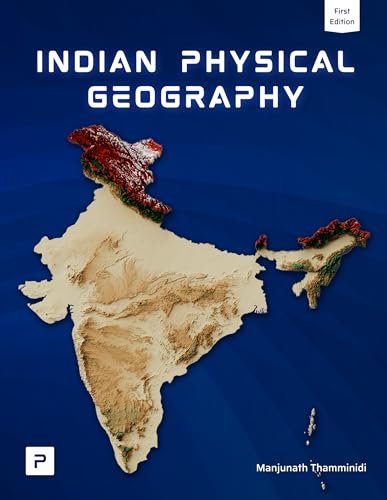

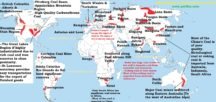

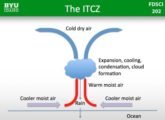

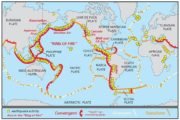

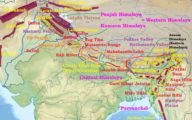
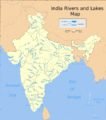




great waiting for more of your articles
You are a Ram ka beta. Doing wonderfull job.
Mandir ban chuka hai bhakt ab jaag jao